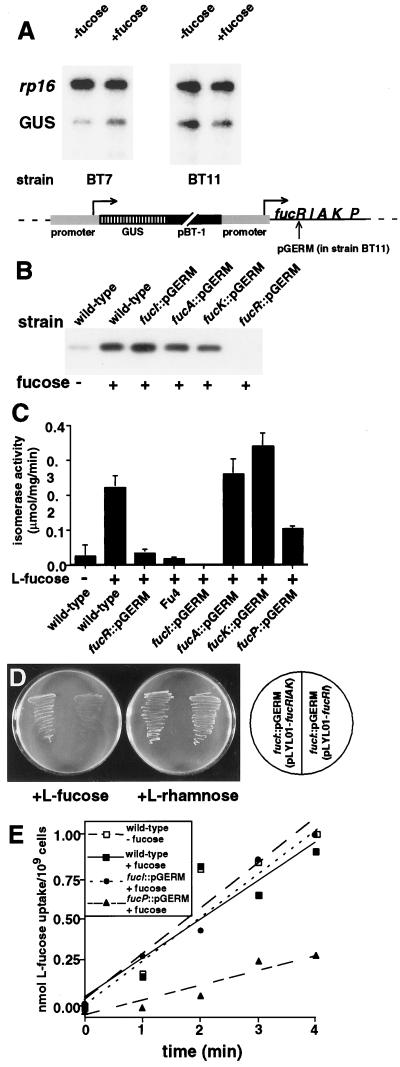Figure 2.
FucR functions as a repressor of the fucRIAK operon. (A) Transcription reporter assay. Strains BT7 (wild-type background) and BT11(fucR∷pGERM background) contain an integrated chromosomal copy of GUS fused to 422 bp of sequence that is normally located directly upstream of the fucR start codon. Note that integration produces a duplication of the 422-bp element, with one copy linked to GUS and the other copy remaining at its endogenous location. GUS mRNA was detected by RNase protection, and signals were compared with those obtained by using a probe to 30S ribosomal protein S16 (rp16) mRNA. The results are representative of three independent experiments. (B) FucR expression. Strains were grown to mid-logarithmic phase on defined medium, with or without l-fucose. Soluble cellular proteins (10 μg per lane) were separated by SDS/PAGE. Western blots were prepared and probed with a rabbit antiserum generated against purified FucR. (C) Assays of cellular l-fucose isomerase activity from mid-logarithmic phase cultures of isogenic strains. (D) Evidence that fucA and fucK are expressed cotranscriptionally with fucRI. The shuttle vector pLYL01 containing fucRIAK rescues the ability of the fucI∷pGERM strain to grow on defined medium containing l-fucose, whereas fucRI does not. (E) l-Fucose permease activity in cells recovered from mid-logarithmic phase cultures of wild-type and mutant strains.

